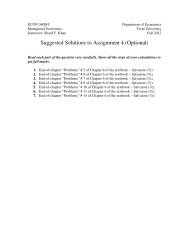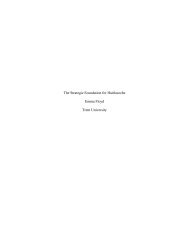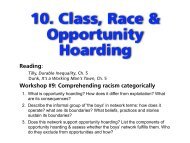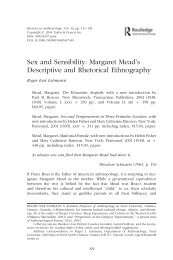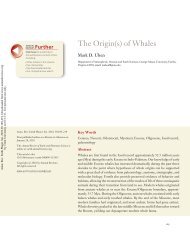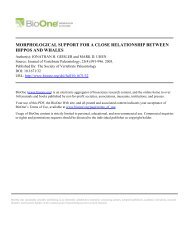REO FORTUNE'S PSYCHOLOGICAL THEORY OF CULTURAL ...
REO FORTUNE'S PSYCHOLOGICAL THEORY OF CULTURAL ...
REO FORTUNE'S PSYCHOLOGICAL THEORY OF CULTURAL ...
You also want an ePaper? Increase the reach of your titles
YUMPU automatically turns print PDFs into web optimized ePapers that Google loves.
Fortune’s Theory of Cultural Ambivalence<br />
283<br />
would compel him to accept that God is a demon for allowing injustice in<br />
the world. Therefore, he preferred to see evil as the result of a “blind force”<br />
(Fortune 1927: 42–43).<br />
For Fortune, agnosticism was associated with disorder and lack of<br />
direction. In the library disorder dream, he was a Christian because this<br />
repressed part of his personality was affectively associated with his open<br />
dislike of “disorder” in the library (Fortune 1927, 43).<br />
Fortune’s father, Peter, was a clergyman and named his son “Reo” after<br />
te reo “the Word” in Maori. According to Caroline Thomas:<br />
Peter Fortune had been a missionary in China but at the time of<br />
Reo’s birth he was an ordained minister posted to the small town<br />
of Coromandel which had a relatively large Maori population. He<br />
was only there about a year before the family moved and over the<br />
next 10 years or so the family changed parishes about 4 or 5 times.<br />
Peter Fortune abandoned the church sometime around 1918 when<br />
Reo was 15 and it is probably then that Reo developed his agnostic<br />
beliefs. (Caroline Thomas, personal e-mail communication, August<br />
27, 2005; quoted with permission)<br />
Fortune thus grew up in a household in which cultural difference and<br />
religious ambivalence were central. Coming of age in New Zealand, he<br />
rejected both the ethnocentrism and absolute religious belief that guided<br />
Christian missionary work. This personal history would have prepared him<br />
well for the ethnographic career he was about to undertake.<br />
A recurring theme of order/tradition versus disorder/individuality appears<br />
in Fortune’s dream narratives. Order/tradition provides structure, beauty,<br />
meaning, and social cohesion, but it also stifles creativity and denies new<br />
knowledge. Disorder/individuality provides novelty and exuberant personal<br />
expression, but it also maims security and staid grandeur. The young<br />
Fortune struggled to discern what their best balance should be. He seemed<br />
to settle, uneasily, for individuality in the same way Margaret Mead was to<br />
do in vacillating between tradition versus freedom in gender roles (Lohmann<br />
2004, 127). Yet Fortune’s fascination with traditional culture, and how<br />
individuals act under its sway, was to help motivate his several future<br />
ethnographic projects.<br />
The Dream of the Pike Attack<br />
In this dream, Fortune found himself in a kill-or-be-killed wartime situation,<br />
where his pacifism and internationalism melted before necessities of<br />
the moment. Fortune’s (1927, 47) description of this dream is brief:<br />
pacs-32-02-06.indd 283 9/7/2009 2:32:33 PM



